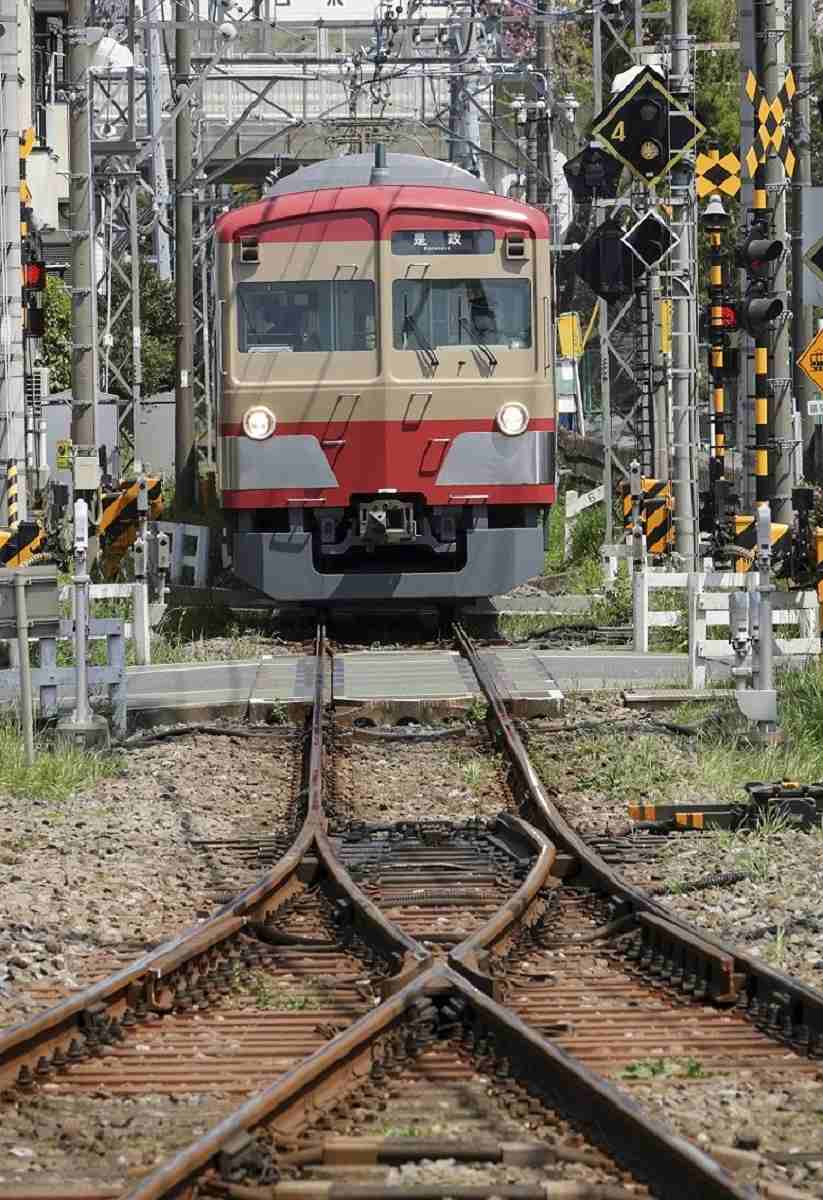
A New 101 Series train with raspberry red and beige coloring on the Seibu Tamagawa Line is seen at Shiraitodai Station.
15:13 JST, June 14, 2023
Many people would think of the color yellow when they think of Seibu Railway Co.’s trains. However, in the 1960s, cars in red and beige were standard for Seibu lines. Four-car trains that reproduce this coloring design, called “aka-den” or red trains, now service the Seibu Tamagawa Line that runs in the Tama area of Tokyo and the Seibu Sayama Line in Tokorozawa, Saitama Prefecture.
One sunny weekday afternoon, I took a ride on the Tamagawa Line.
The line is an 8-kilometer single-track line connecting Musashi-Sakai Station in Musashino, Tokyo, and Koremasa Station in Fuchu, Tokyo, with six stations including both terminals. As I waited on the platform of Musashi-Sakai Station, which the JR Chuo Line also serves, the inbound aka-den train arrived. The coloring of the train — the roof and lower part of the train painted a dull raspberry red and the window areas in beige — made me feel nostalgic.
This old design was reintroduced in 2017, in response to calls for a revival of the coloring collected at an event held to commemorate the 100th anniversary of the line’s opening.
The current New 101 Series trains painted in the aka-den design are already old. They were first introduced in 1979, and the train I rode was produced in 1980. Most trains are now generally operated with one lever for both braking and acceleration, but the New 101 Series is still operated in the old-fashioned manner, with the right-hand lever for braking and the left lever for power control. “If it was a car, it would be like driving a manual,” Masaomi Hatano, 50, said. “I can operate it the way I want, with subtle control.”
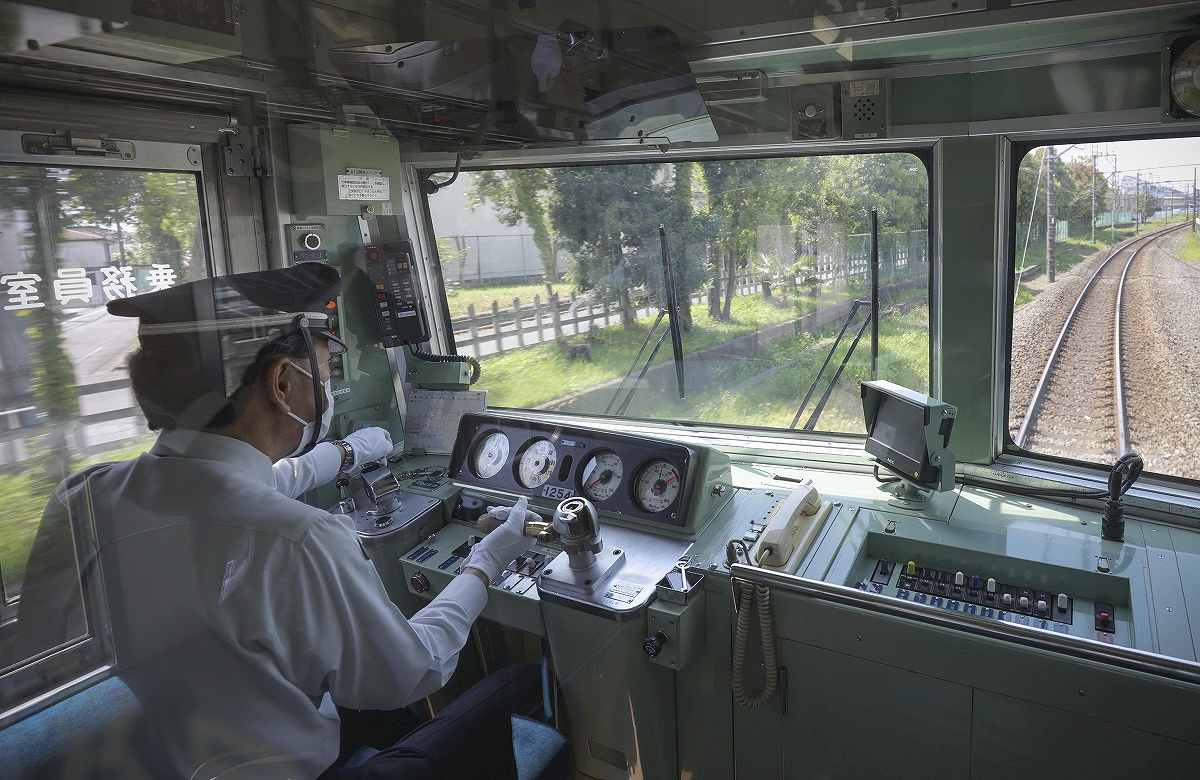
A driver operates two levers to control the New 101 Series train.
In addition to the aka-den, the Tamagawa Line offers a variety of other color designs, including the “yellow and beige” pattern popular in the 1970s, and the “blue and white” design modeled after the Seibu Group’s Izuhakone Railway.
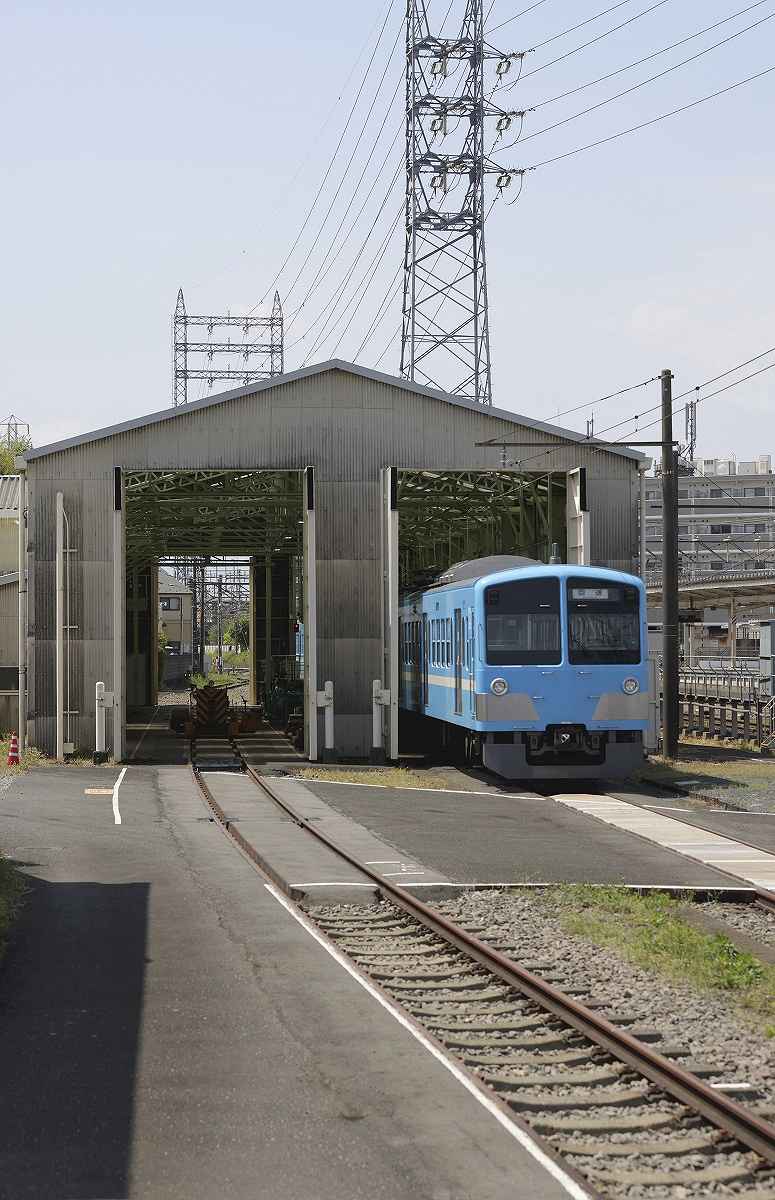
A blue train is seen at the train depot adjacent to Shiraitodai Station.
Shiraitodai Station in Fuchu, the third stop from Musashi-Sakai, is one of the stations on the single-track line where the track splits so that inbound and outbound trains can wait and pass each other. The station is located adjacent to the train depot of the Tamagawa Line, making it a good place to see a variety of trains at once. There were families with children as well as a train enthusiast holding a camera with a huge telescope-like lens. “What color train will come next?” a child happily asked their parents.
“Time seems to flow slowly on the Tamagawa Line,” said Yasushi Iizuka, 58, the head of the Tamagawa Line management office. “Please enjoy the retro feeling of the trains.”
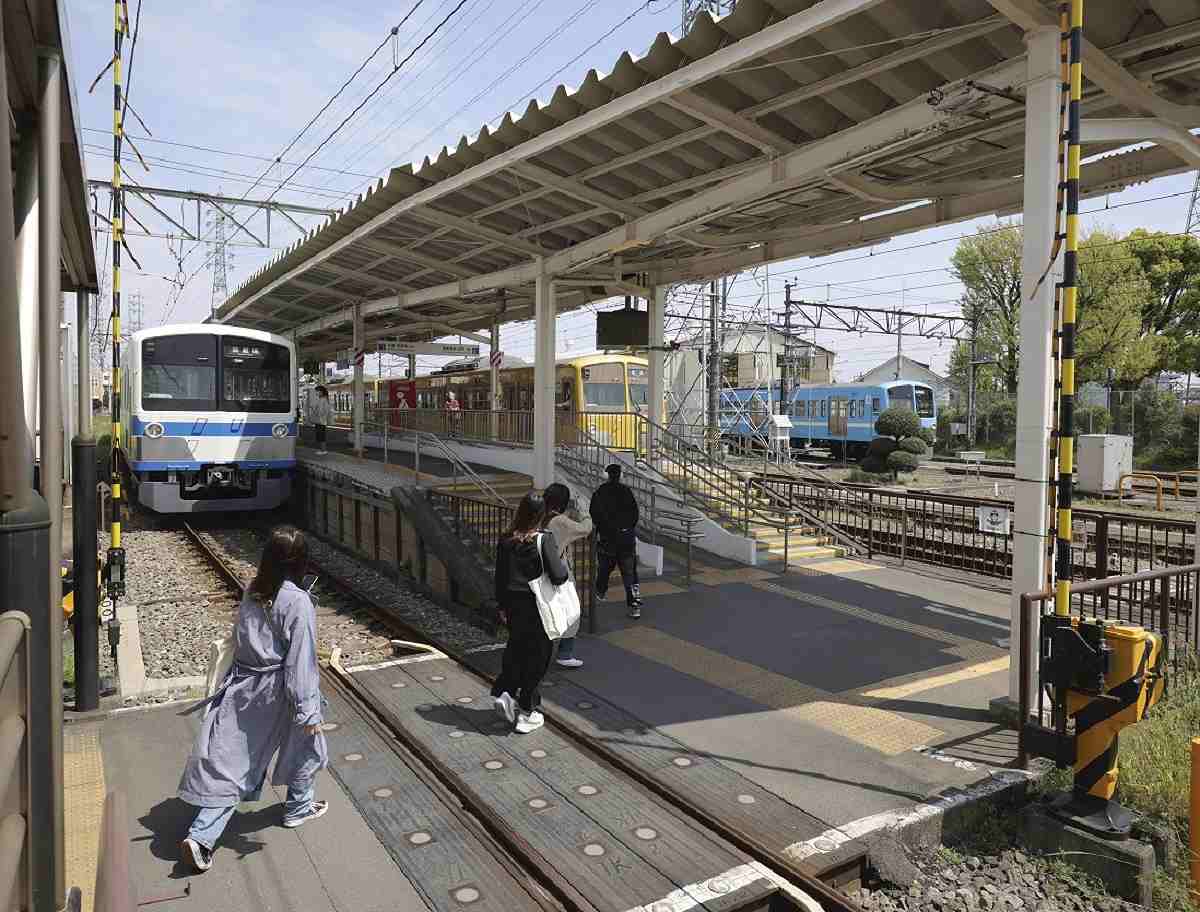
Passengers have to use a crossing to reach the platform from the ticket gate at Shiraitodai Station.
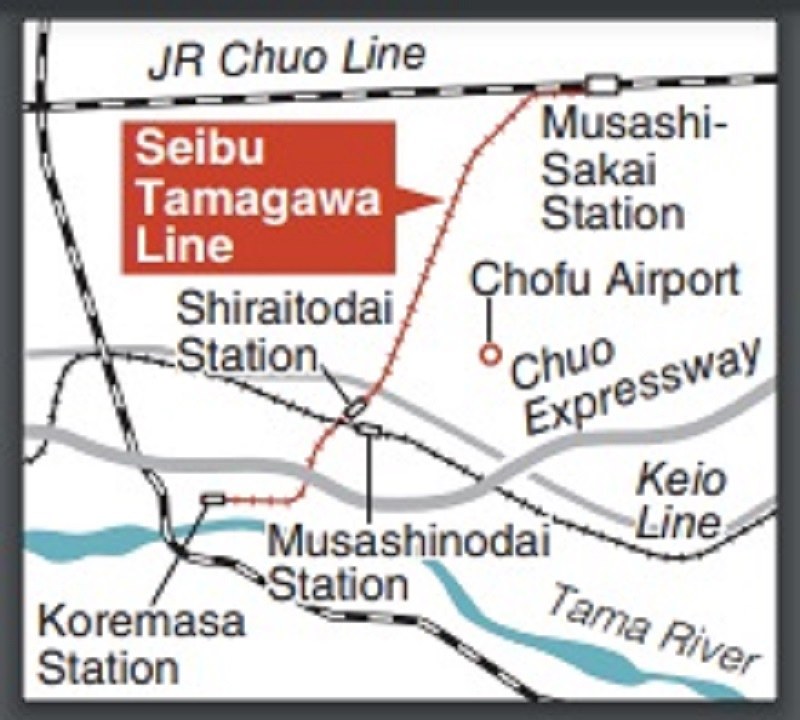
Seibu Tamagawa Line
In 1917, Tama Railway, which later merged with Seibu Railway Co., opened a section between Musashi-Sakai and Shiraitodai stations. The line was extended to Koremasa Station in 1922.
Photo location: Shiraitodai Station (2-71-6 Shiraitodai, Fuchu, Tokyo)
Related Tags
"Features" POPULAR ARTICLE
-

Sanrio to Open Museum in Yamanashi Pref. Dedicated to Founder, Exhibits Include Hello Kitty, Other Characters
-

Autumn Foliage Surrounds Visitors to Tokyo’s Showa Kinen Park
-

My Daughter No Longer Speaks to Me, But I Want to See Her and My Grandchild
-

Kumamoto: Public Bath Refurbished as Library Where You Can Chat, Take Photos
-

Frozen Vegetables: Demand Rises for Convenient, Tasty Domestic Produce
JN ACCESS RANKING
-

Tokyo Economic Security Forum to Hold Inaugural Meeting Amid Tense Global Environment
-

Keidanren Chairman Yoshinobu Tsutsui Visits Kashiwazaki-Kariwa Nuclear Power Plant; Inspects New Emergency Safety System
-

Imports of Rare Earths from China Facing Delays, May Be Caused by Deterioration of Japan-China Relations
-

University of Tokyo Professor Discusses Japanese Economic Security in Interview Ahead of Forum
-

Japan Pulls out of Vietnam Nuclear Project, Complicating Hanoi’s Power Plans



























